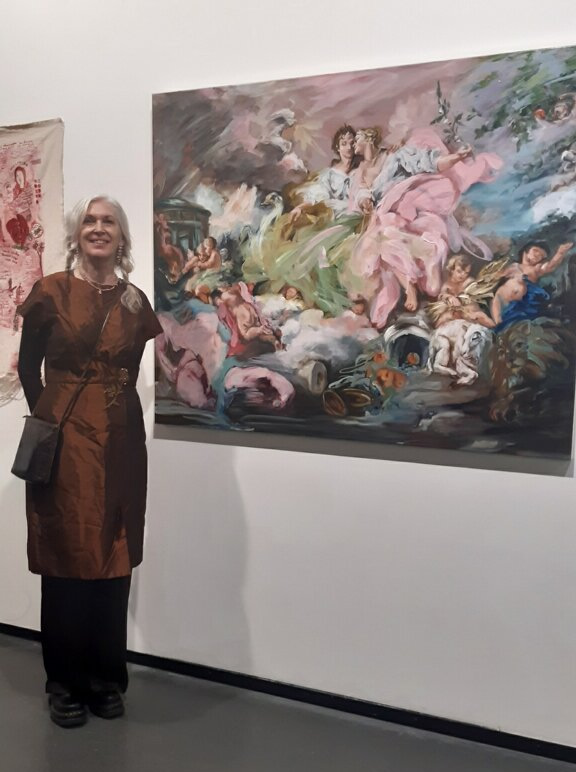Introducing Anita DeSoto
My profound passion for painting takes on a vivid voice as it intertwines with my deep fascination for History. It’s a captivating dance where the forgotten stories of women, often hidden, find their expression in my art. A constant thread in my work.
I was born in Waimate, near where generations of my paternal ancestors lived in the enchanting Totara Valley in Waitaha/Canterbury. Amongst the limestone caves that hold ancient whispers and Maori art. And the echo of long-forgotten horseback journeys through this valley, as children rode huge distances to school.
In the journey of my life, Koputai/Port Chalmers is a place of profound significance. It was here, from the age of 3, that I grew up around my maternal lineage. The salty breeze of Koputai carries within it the echoes of generations past, and my family’s tales.
Imagine the scene in the 1840s, my great-great-great grandmother was eyewitness to hundreds of vessels navigating Otago Harbour, carrying with them a tide of settlers. Her survival story of womanhood in that era remains etched in my consciousness – an awe-inspiring testament to her endurance and resilience.
Now, standing as a matriarch within my own family, I find profound joy in the act of sharing life’s journey with my loved ones. In a cottage by the ever-changing sea in Blueskin Bay, my partner and I have cultivated a garden vast in size, colours, and produce. Another kind of canvas imbued with a vibrant spectrum.
On The Horizon

The photo above was taken at the Gala night for finalists of the Parkin Drawing Award, in Wellington 2024.
Group shows up and coming:
Centrality opens in Wanaka at the Architecture and Design Library 9th Nov- 10th Feb 2025, and Around Christmas at Gallery Denovo in November 2024.
Solo shows:
For those of you who missed the Potion exhibition in the Eastern Southland GalleryI’m thrilled to say Potion will exhibit again at Invercargill Public Art Gallery in January 2025, Aigantighe, Public Art Gallery in Timaru 2025, and Ashburton Public Art Gallery 2026
WWAC Women’s Work Art Collective:
I am very glad to say this year we have formed a small group that includes Linda Cook, myself, Ana Terry, Emma Cook, Joanna Zellmer, and Bridie Lonie as an adviser.
Our first show will be at Olga Gallery, Dunedin in early 2025.
Recent reading:
Reassuring reading for me is Katie Whites’s Art-Net article Neo-Rococo Movement Is On the Rise—But What Does It All Mean?